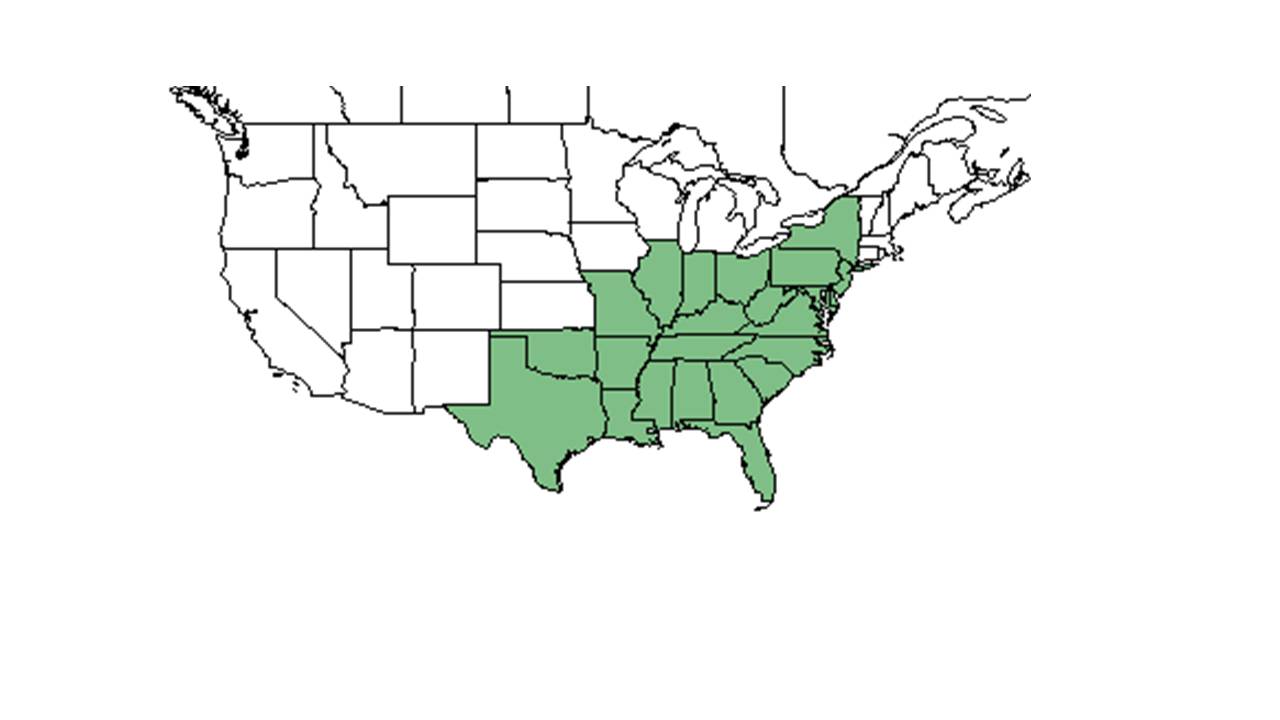Difference between revisions of "Desmodium laevigatum"
(→Photo Gallery) |
|||
| Line 20: | Line 20: | ||
Common name: Smooth ticktrefoil | Common name: Smooth ticktrefoil | ||
==Taxonomic notes== | ==Taxonomic notes== | ||
| + | Synonym: ''Meibomia laevigata'' (Nuttall) Kuntze | ||
==Description== | ==Description== | ||
<!-- Basic life history facts such as annual/perrenial, monoecious/dioecious, root morphology, seed type, etc. --> | <!-- Basic life history facts such as annual/perrenial, monoecious/dioecious, root morphology, seed type, etc. --> | ||
| Line 36: | Line 37: | ||
It has been observed flowering and fruiting from September to November (FSU Herbarium). | It has been observed flowering and fruiting from September to November (FSU Herbarium). | ||
| − | ===Seed dispersal=== | + | <!--===Seed dispersal===--> |
| − | ===Seed bank and germination=== | + | <!--===Seed bank and germination===--> |
| − | ===Fire ecology=== <!--Fire tolerance, fire dependence, adaptive fire responses--> | + | <!--===Fire ecology===--> <!--Fire tolerance, fire dependence, adaptive fire responses--> |
| − | ===Pollination=== | + | <!--===Pollination===--> |
| − | ===Use by animals=== <!--Herbivory, granivory, insect hosting, etc.--> | + | <!--===Use by animals===--> <!--Herbivory, granivory, insect hosting, etc.--> |
| − | ===Diseases and parasites=== | + | <!--===Diseases and parasites===--> |
| − | |||
==Conservation and Management== | ==Conservation and Management== | ||
==Cultivation and restoration== | ==Cultivation and restoration== | ||
Revision as of 16:38, 2 March 2016
| Desmodium laevigatum | |
|---|---|

| |
| Photo taken by Kevin Robertson | |
| Scientific classification | |
| Kingdom: | Plantae |
| Division: | Magnoliophyta - Flowering plants |
| Class: | Magnoliopsida – Dicotyledons |
| Order: | Fabales |
| Family: | Fabaceae ⁄ Leguminosae |
| Genus: | Desmodium |
| Species: | D. laevigatum |
| Binomial name | |
| Desmodium laevigatum (Nutt.) DC. | |

| |
| Natural range of Desmodium laevigatum from USDA NRCS Plants Database. | |
Common name: Smooth ticktrefoil
Contents
Taxonomic notes
Synonym: Meibomia laevigata (Nuttall) Kuntze
Description
Generally for the Desmodium genus, they are "annual or perennial herbs, shrubs or small trees. Leaves 1-5 foliolate, pinnately 3-foliolate in ours or rarely the uppermost or lowermost 1-foliolate; leaflets entire, usually stipellate; stipules caduceus to persistent, ovate to subulate, foliaceous to setaceous, often striate. Inflorescence terminal and from the upper axils, paniculate or occasionally racemose; pedicel of each papilionaceous flower subtended by a secondary bract or bractlet, the cluster of 1-few flowers subtended by a primary bract. Calyx slightly to conspicuously 2-lipped, the upper lip scarcely bifid, the lower lip 3-dentate; petals pink, roseate, purple, bluish or white; stamens monadelphous or more commonly diadelphous and then 9 and 1. Legume a stipitate loment, the segments 2-many or rarely solitary, usually flattened and densely uncinated-pubescent, separating into 1-seeded, indehiscent segments." - Radford et al 1964.
Specifically, for D. laevigatum species, they are "erect perennial; stems 0.5-1.2 m tall, glabrous to sparsely and inconspicuously uncinulate-puberulent. Terminal leaflets ovate to elliptic-ovate or elliptic-oblong, (3) 4-7 (9) cm long, glabrous to very sparsely puberulent above, glabrous to puberulent or sparsely short-pilose, often glaucous beneath with the trichomes largely restricted to the principal veins; stipules caduceus, lance-attenuate, 5-8 mm long; stipels persistent. Inflorescence usually paniculate, moderately to densely uncinulate-puberulent; pedicels mostly 7-19 mm long. Calyx densely puberulent; petals pink or roseate to purple, 8-10 mm long; stamens diadelphous. Loment of 2-5 subrhombic segments, each about 5-8 mm long, 3.5-5 mm broad, with a straight or slightly convex upper suture and an abruptly angled lower suture, with densely uncinulate sutures; stipe ca. 4.5-6.5 mm longer, much longer than the calyx tube but often equaling or even exceeding the calyx lobes, shorter than stamina remnants." - Radford et al 1964.
Distribution
Ecology
Habitat
It is found in areas that frequently burn such as open woods bordering a bay, hardwood hammocks, upland pine, in open mixed pine-hardwood forest, well drained upland, savannas, turkey oak sand ridges (FSU Herbarium). Requires low-high light levels. Is associated with loamy sand, sandy clay loam, limestone, and sand soil types (FSU Herbarium).
Associated species include Desmodium ciliare, D. lineatum, D. glabellum (FSU Herbarium).
Phenology
It has been observed flowering and fruiting from September to November (FSU Herbarium).
Conservation and Management
Cultivation and restoration
Photo Gallery
References and notes
Florida State University Robert K. Godfrey Herbarium database. URL: http://herbarium.bio.fsu.edu. Last accessed: June 2014. Collectors: Loran C. Anderson, R.K. Godfrey, Angus Gholson, A. F. Clewell, V. Sullivan, J. Wooten, R. Kral, R. Komarek, T. MacClendon, - Boothes, Travis MacClendon, Karen MacClendon, Geo. Wilder, Harry E. Ahles, C. R. Bell, H. R. Reed, Delzie Demaree, William B. Fox, and S. G. Boyce. States and Counties: Alabama: Etowah, Franklin, and Lee. Arkansas: Drew. Florida: Bay, Calhoun, Franklin, Jackson, Jefferson, Leon, Liberty, Okaloosa,and Wakulla. Georgia: Baker, Decatur, Grady,and Thomas. Mississippi: Pearl River. North Carolina: Sampson. South Carolina: Beaufort. Virginia: Montgomery.
Radford, Albert E., Harry E. Ahles, and C. Ritchie Bell. Manual of the Vascular Flora of the Carolinas. 1964, 1968. The University of North Carolina Press. 604-11. Print.